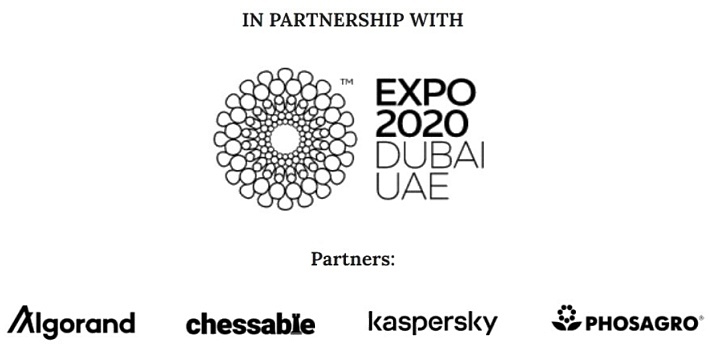As the expert predictions emerge online on the morning of Game 5, there is a foreseeable sense of permanent deadlock about the match at this stage. While casual observers are quick to bemoan a start of four draws, the aficionado is more concerned about the complexity and fighting spirit behind the results.
Chess is a game of complete information, innate balance, and now, computer encroachment. A draw is a correct result and the most likely at the top level. Like football fans, what often matters most to chess addicts watching a draw is drama and application. The feeling of continuing deadlock is due to a more worrying trend, the games are getting shorter, and the sense of nearly full-game preparation is rising.
Live mood
There is something very special about watching a world championship match live. Even in this day and age, with an overabundance of real-time coverage in all manner of channels, you can still get a better sense of what is happening by taking it in on the spot.
The hushed reactions of the crowd; the traffic patterns of spectators in and out of the playing theatre as the complications on the board fluctuate; the expressions and secretive chats of any members of the players’ delegations; the growing excitement of the expert commentators – all of this blends with the ability to scrutinize the players themselves, and creates a cocktail of tension and atmosphere.

A fascination with body language might be the first step to appreciating live classical chess, but a sense of the mood in the building, the collective buzz and hum – this can only be experienced live.
It is palpable – enough so that in the middle of Game 4, most of the media suddenly surged out of the press box, convinced that the game was about to end in a draw. They had underestimated the champion’s work ethic, or misread his body language. He might have been frustrated, but he was there to put in a full shift, trying to extract water from the challenger’s stone of the day.
The opening ritual
Each game begins with the loud ringside introduction of the players, white first, by Master of Ceremonies Maurice Ashley. Today, for game five, the summons brings both players promptly from their backstage areas.
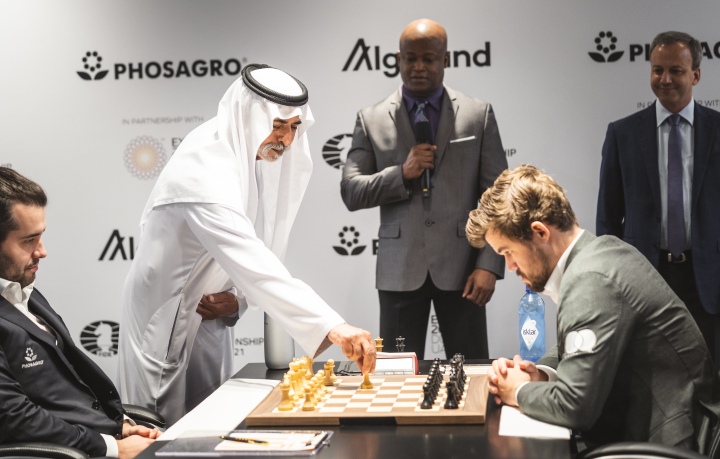
His Excellency Sheikh Nahyan bin Mubarak Al Nahyan, Minister of Tolerance and Coexistence and Commissioner General of Expo 2020, made the first move today, as ever, in the presence of FIDE President Arkady Dvorkovich. Dvorkovich took the opportunity to congratulate the UAE on the Golden Jubilee of the national union and thanked the match hosts for their hospitality.
The ceremonial first move was captured on camera, and as the Minister played 1.c4, there was a moment of anticipation for a new opening from challenger Ian Nepomniachtchi. The reset and official start, however, confirmed the expert forecasts, and the familiar battleground from games and 1 and 3 was revisited.
Champion Magnus Carlsen was the first to deviate, choosing a new 8th move, but his opponent fired off moves at speed, showing the confident breakaway-train pace that he is famous for but has reined in during the match so far. Although it was hard to read any clear signs of surprise on the champion’s face, Nepomniachtchi raced out to roughly a half an hour edge on the clock, indicating that he was both still in his pre-game preparation and still in control.
Pressure on the champ
Official match commentator, former world champion Vishwanathan Anand, had one of the strongest opinions as Carlsen sank into thought on his 19th move. While there was general expert agreement that Nepomniachtchi had maintained the advantage of the first move, Anand said that not only did he not like the black position, he didn’t think Magnus did either.
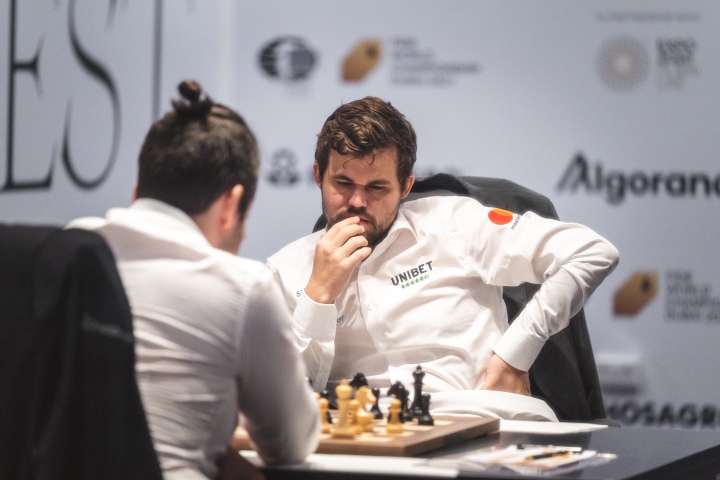
As the players hit move 20, it was the challenger’s turn to pause and contemplate, something he habitually does while twirling a captured pawn with the fingers of his right hand.
Anand also had a slightly different take on the subject of nervous pressure. Drawing on his own vast experience of playing title matches, Anand believes that the nerves never stop jangling in a title match, since there is a constant, growing fear of error, and one misstep could determine the result.
Diminishing returns
The expert consensus was that the beginning of Nepomniachtchi’s deep thinks resulted in a surprising dispersal of his pressure, with commentators pointing to his 20th move as unambitious. This was followed by a sequence of material trades that steered the game once more towards a peaceful conclusion.
Interest was piqued again as the champion appeared to choose a passive defence, but with precise play, Carlsen erected an impregnable fortress. Elite grandmaster (GM) Anish Giri echoed Garcia’s earlier observation, saying he felt the Norwegian had arrived tired for game five, and had been vulnerable today.
A common talking point among commentators was whether the challenger’s conscious decision to adopt a cautious match strategy might have inhibited him from mounting a serious winning bid after he secured an early advantage.
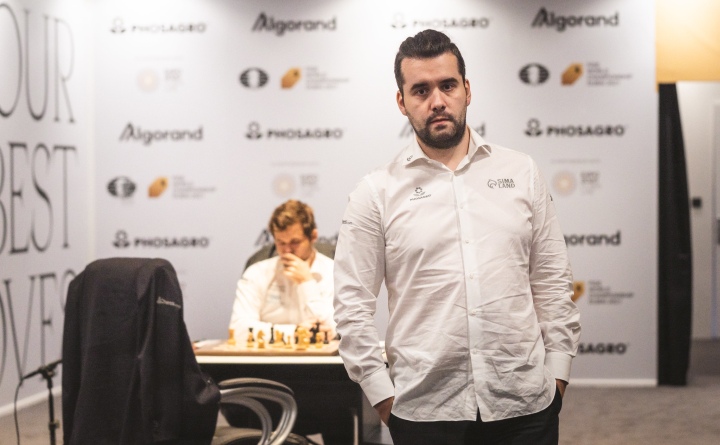
To all appearances, Nepomniachtchi had the upper hand in speed, preparation and position today, and even if his superiority was not deadly, it was likely a rare opportunity to have this trifecta in a title match.
When the time control was reached at move 40, the champion was visibly relaxed, and confident that he no longer had anything to fear on the board. After brief reflection, Nepomniachtchi agreed, and initiated a repetition of moves that signalled the fifth consecutive draw of the match.
A new detail
Although the players exchanged a few words after the end of play, for the first time, they didn’t linger and have a longer discussion of the critical points in the game. Previous title challenger, US GM Fabiano Caruana, said he read Nepomniachtchi’s reticence and expression as a sign the challenger was angry with an opportunity missed, even if his advantage had never been decisive.
Regardless of how he arrived, Carlsen was visibly subdued and weary after the game and confirmed the in-game assessments of commentators, identifying white’s 20th as a welcome surprise, and that he had been under more pressure in the endgame than he had anticipated. “The tension is rising, and it’s becoming clearer and clearer that it’s going to be hard for either of us to break through … it’s not easy,” Carlsen said.
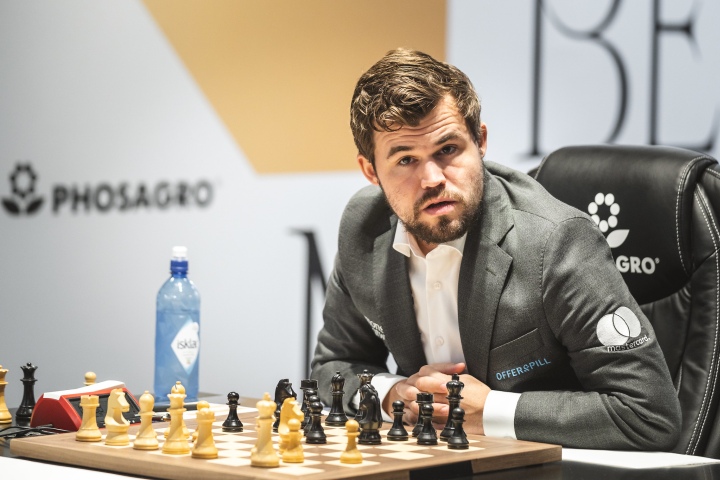
Nepomniachtchi admitted that he felt he could have done more to test his opponent. “Of course, I am disappointed. You are not happy, obviously I should have tried harder to use the momentum.”
Local colour
In a pre-match podcast interview in Norway, Carlsen was reminded about how he had opened his title defence vs. Sergey Karjakin in New York 2016 by playing the slightly offbeat Trompovsky Opening, known as ‘The Tromp’, which he admitted was a punny way of referring to the then-recent presidential election of Donald Trump.
Magnus told the interviewer, his chum Magnus Barstad, who is present in Dubai, that he did have a local tribute planned for this match but that it would not be on the board. No one having spotted anything so far, Barstad was quizzed about it and told Norwegian broadcaster NRK that this homage was coming soon. This little mystery has given spectators, particularly Norwegians who would have heard the podcast well in advance, another thing to watch for.
Update: Barstad confirmed today the tribute is planned … but postponed.
Coming up
The players now have a day’s rest, with the next block of three games starting on 3 December. This will be Carlsen’s chance to have two whites between rest days, and the colours will then be balanced after eight games.
FACT SHEET, Game 5, FIDE (International Chess Federation) World Championship:
White: Ian Nepomniachtchi
Black: Magnus Carlsen
Result: ½-½
Match score: 2½-2½
Game length: 42 moves
Opening: Ruy Lopez
Variation: Anti-Marshall
Trivia: Tomorrow is a rest day in the match but the beginning of a four-day celebration of the 50th anniversary of the UAE’s Union Day.
Text: Jonathan Tisdall, Press Officer press@fide.com
Photo: Niki Riga
Official website of FIDE World Championship Dubai 2021
